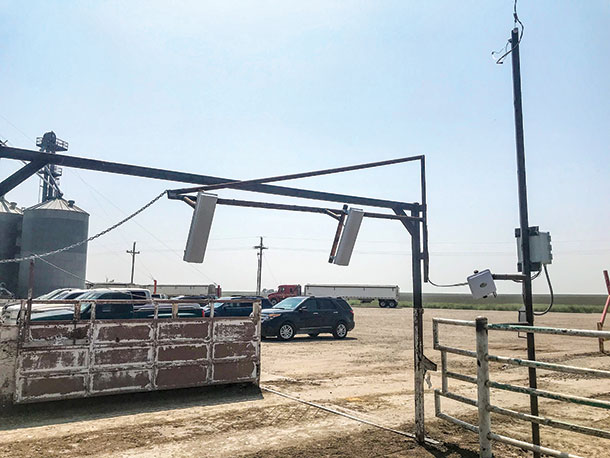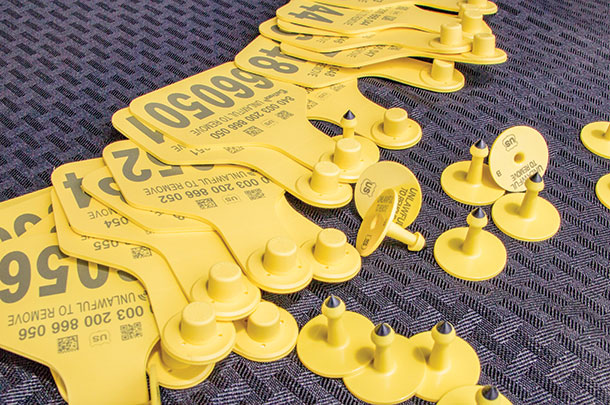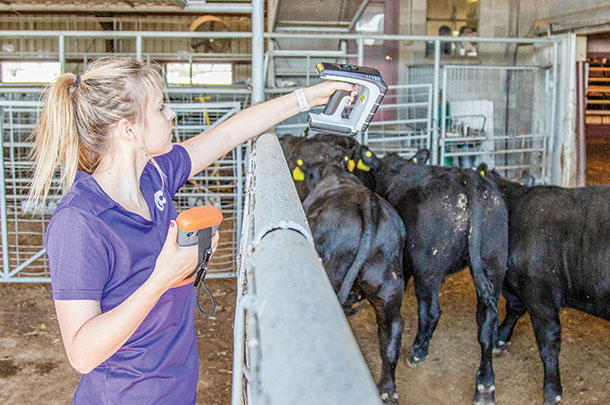It is well-known a disease outbreak and subsequent quarantine can and would render producers at the mercy of regulatory organizations that would decide the fate of their herds and cripple both international and domestic markets.
A new initiative from the state of Kansas, however, may add a level of security for producers through individual animal disease traceability for all classes of cattle. CattleTrace seeks to enroll cow-calf herds, livestock auctions, feeders and packers throughout the state in the disease traceability program using ultra-high frequency tags and readers – a technology that will take the individuality out of reading and recording data while allowing individual animal data to be collected.
Cassie Kniebel, program manager for the CattleTrace pilot project, shares the initiatives behind CattleTrace have been in the works for some time.
“Several different initiatives played into the start of the pilot project,” she says. “In December of 2017, the Kansas Livestock Association (KLA) passed a resolution in support of mandatory identification for all classes of animals for disease traceability purposes.

And for the past few years, the Kansas Department of Agriculture (KDA) has hosted a producer and stakeholder summit to ensure state agriculture efforts align with topics important to producers. Traceability has continually been a hot topic, so it has been on KDA’s radar for a long time.
“Then, at the end of January, NCBA released the World Perspectives Inc. report, based on findings from a survey of over 600 producers from across the country. The survey looked at what was important to producers from a traceability standpoint, as we move forward as a country and industry, and those answers helped to give this project a starting point.”
The resounding message of the need for disease traceability encouraged several Kansas groups to come together to form the CattleTrace pilot project. The collaborative effort among the KDA, Kansas State University’s Beef Cattle Institute, the KLA and other industry partners will work to create a framework for disease traceability through data collection and management over the next two years.
The advisory committee was formed and began laying out protocols and direction for the program in early 2018.
Traceability protocols
The CattleTrace project is solely focused on disease traceability, with the pilot focusing on three main objectives:
1. Infrastructure: Technology, reader placement and industry participation are components of the purpose-built infrastructure for a disease traceability system that maintains four points of data: time, date, animal ID and animal location.
2. Evaluation: What the efficiencies and capabilities of the infrastructure are and how to use the infrastructure to collect data, answering the question: Does it work?
3. Value: Identifying what the costs and benefits of a disease traceability system are throughout the supply chain at both an industry and producer level
To date, CattleTrace has three major packers, 14 feedlots and seven auction markets secured to participate in the project and has begun recruiting cow-calf herds within those seven auction markets, with a goal of 55,000 identified and traceable head in Kansas. Interest is also being fielded from other beef-producing states hoping to participate in the project.
 Currently, the CattleTrace board of directors is setting data accessibility protocols for how and when collected data may be accessed by state and federal agencies, a concern among many producers since the first conversations of mandatory animal identification in 2004.
Currently, the CattleTrace board of directors is setting data accessibility protocols for how and when collected data may be accessed by state and federal agencies, a concern among many producers since the first conversations of mandatory animal identification in 2004.
Brandon Depenbusch, vice president of cattle operations for Innovative Livestock Services, serves as chairman for the CattleTrace pilot project’s board of directors and participates in the program as a livestock feeder. He says the removal of producer identification and CattleTrace’s sole ownership of data has helped ease producer concern.
“Every producer meeting we have had, everybody we have talked to, we haven’t run into the resistance others have run into in the past, and I think the reason is: We are only looking at those four points of data,” he says. “There’s no ownership identification, no premise name, nothing tying anyone to an animal outside of those four points.
“There are hundreds of other pieces of data we could collect but, with each additional piece of data, the uneasiness among our producers increases. So keeping it simple has been very helpful – that and the fact that pilot project and board of directors will help set the protocol for how and why that data is accessed by anyone other than CattleTrace,” he says.
Value-added peace of mind
As a lifelong cattle producer and longtime member of the KLA, CattleTrace participant Barb Downey of Downey Ranch Inc., says animal disease traceability is something that has long been on her personal radar.
“What we all have to really remember,” says Downey, “is: The last estimate of a finished animal due to overseas trade was $330 a head, and that affects me as a cow-calf producer. If international trade were to go away tomorrow because we have a disease and can’t identify the origin and what animals should be allowed to move and which animals should be quarantined – if we can’t answer that question almost instantly, then trade is shut down.

“We saw it with BSE in 2003; the bottom falls out. And I have no interest in participating in something like that again when I know it could be prevented and managed if we knew what animal was where and when.”
Downey says the added security of knowing her animals are safe from an outbreak, and the decision-making power that knowledge gives her as a producer, is invaluable, making the decision for participation in CattleTrace an easy one for the ranch.
Still in the stages of recruiting industry participation and equipment installation, CattleTrace hopes to begin collecting data in the near future. ![]()
PHOTO 1: CattleTrace-enrolled cattle in Russell, Kansas. Photo by Shelby Mettlen, Beef Cattle Institute, Kansas State University.
PHOTO 2: A stationary UHF reader is installed at NA Timmerman Feedyard in Colby, Kansas. Photo provide by Brandon Depenbusch.
PHOTO 3: Project tags are pictured above. Photo provide by Brandon Depenbusch.
PHOTO 4: The handheld UHF reader captures the first data on CattleTrace project cattle in Russell, Kansas. Photo by Shelby Mettlen, Beef Cattle Institute, Kansas State University.
Laura Handke is a freelance writer based in Kansas.






